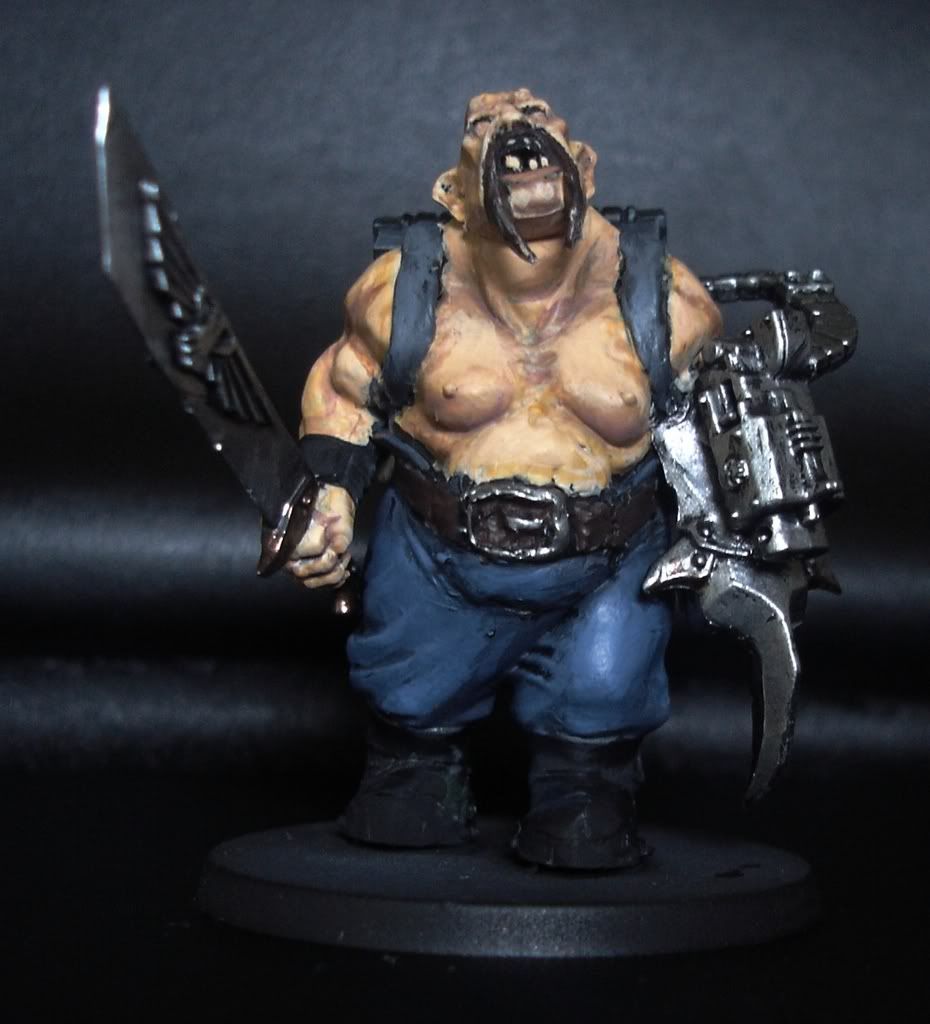 By Suneokun.
By Suneokun.Recently, I've been giving some detailed thought to the ways and how's of playing 40k. Despite playing for many years, and having (what I think) is a fairly detailed and intelligent mind, I seem to have struggled with army lists. The simple fact is that while I can visualise the minutae of a particular playing pieces and devise cunning assault of defence strategies about them, I have struggled with the 'bigger picture' and against many experienced players I've lost poorly.
Importantly, you'll notice that I have completed excluded the mention of close combat 'potential' in this tactica, as I believe this will confuse things greatly. Close combat is in it's essense a 'micro-managed' part of the game, with unit versus unit/s. As such the potential of each is easily identified and is either halted, counteracted or contained. I will consider following up with a combat tactica later.
This post was inspired by a recent 'Eureka' experience in the construction and planning of army lists - and this has been decisive in some fairly good victories.
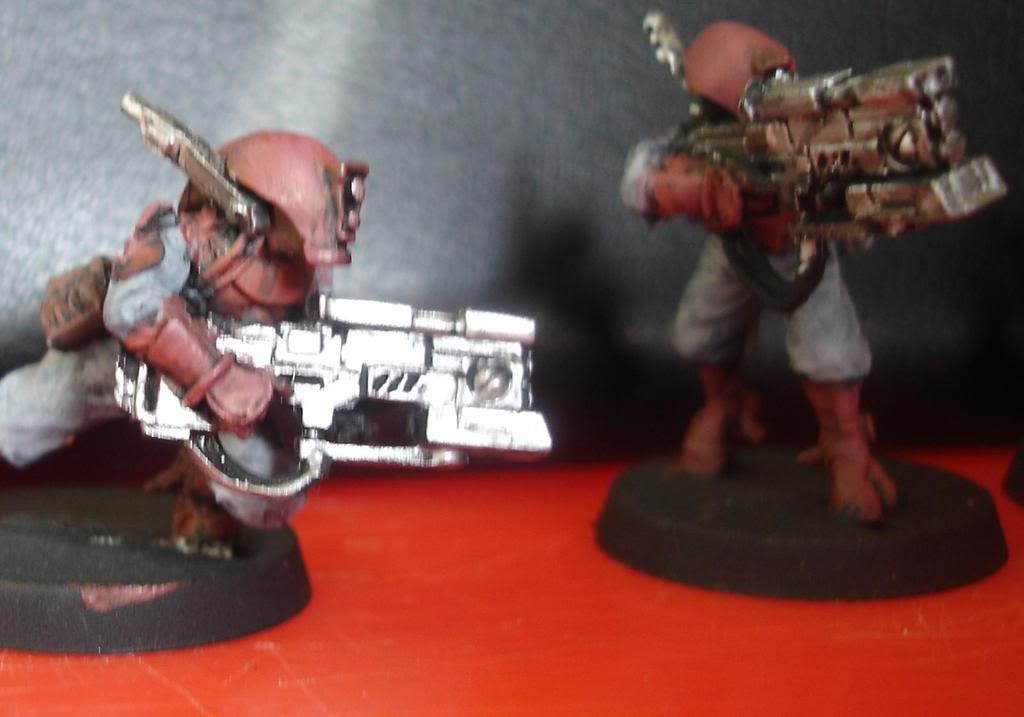 When writing an army list, its all too common to fall into the following traps:
When writing an army list, its all too common to fall into the following traps:- I'll take my key unit/character/vehicle again: as fetishising geekdom attests, its awfully easy to get 'attached' to the abilities of a particular hero, squad or vehicles in your line. As others have highlighted, the 'seer council on jetbikes with rerollable saving throws' of doom, is great - but it does lead to a 'one size fits all' army list - this can have impacts for your opponents (they may avoid you and your instant-win army), but all to frequently it builds in a familiarity or predictability that your opponent can exploit (mainly by killing your key unit).
- I'll build a generic list and not think about my opponent: With the wide access on-line to codex sheets, tactica's and battle reports - we have no excuse to go into battle unprepared. Even facing an army you've never played before, you should have a fairly firm idea about their strengths and weaknesses. More importantly you should think about their army (and your own) on a macro level (how do they operate, what sort of playing style should I expect?) - otherwise you'll be blindsided.
- It just fun, isn't it? Yes, most importantly it is fun - but FAIR fun. This is about ensuring you don't have to endure 5 turns of fruitless massacre without comeback (and the frankly slightly embaressed and yet still present crowing of the opposition!) - which ain't no fun.
Army list Tactica 1: know your opponent.
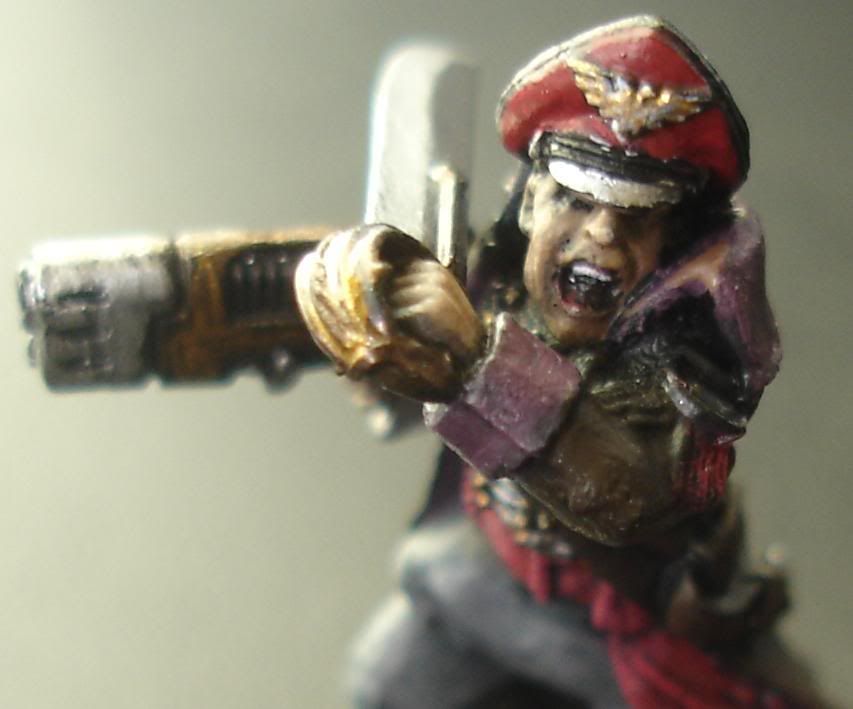 Ok, so we know Deamons all deepstrike, ravenwing are fast and Nob Biker Platoons are far to fast, hard and jammy - but, importantly, how do we match our army to theirs? The first thing to do, which seems very obvious, is play to your strengths. It's all too easy when facing Tau with a Imperial Guard army to get carried away with thinking about rough riders and Ogyrns pummeling their lines - but lets face it, you are going to have to get there first! You could opt for a jammy option like flanking your whole force, or deep striking the lot - but let's face it - like Ork Bikers its an 'in game' cheat, and anything that denies the opposition a chance ain't fair.
Ok, so we know Deamons all deepstrike, ravenwing are fast and Nob Biker Platoons are far to fast, hard and jammy - but, importantly, how do we match our army to theirs? The first thing to do, which seems very obvious, is play to your strengths. It's all too easy when facing Tau with a Imperial Guard army to get carried away with thinking about rough riders and Ogyrns pummeling their lines - but lets face it, you are going to have to get there first! You could opt for a jammy option like flanking your whole force, or deep striking the lot - but let's face it - like Ork Bikers its an 'in game' cheat, and anything that denies the opposition a chance ain't fair.So your Strengths should be defined by your ability to strike the opponent without retaliation. It should be reviewed on the following, these are listed in priority order:
Defensive Matrix
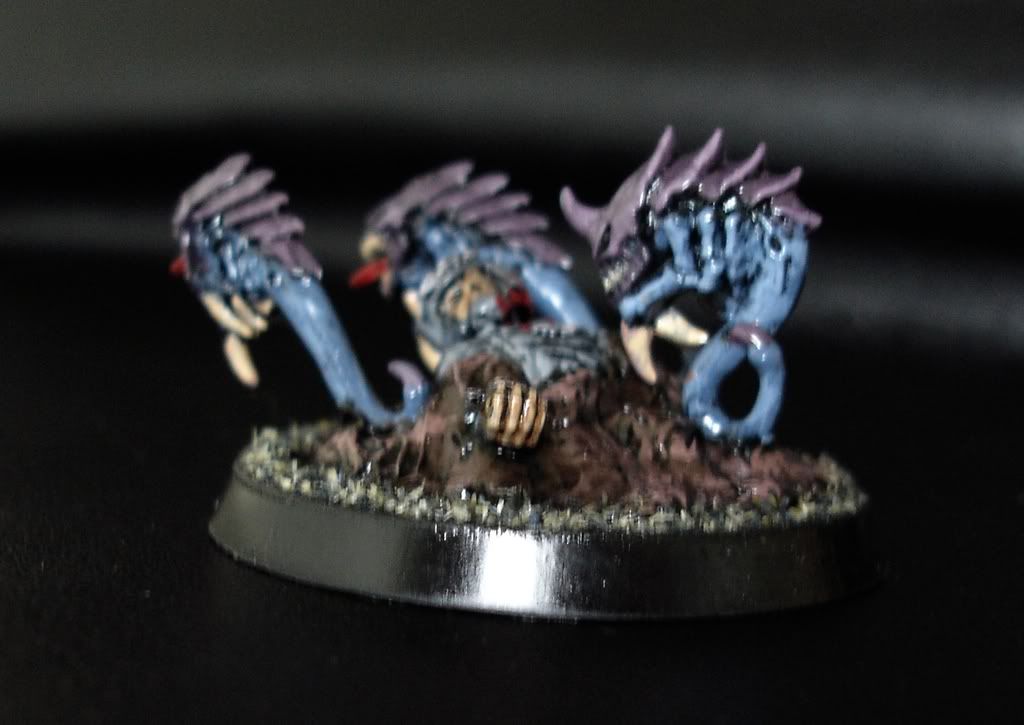 Range: Can I outdistance the opposition. Example: Guard can outdistance Tau forces in multiple ways, by staying outside 30" the guard have over 10 heavy weapons and ordinance weapons (not counting the new codex) to the tau's missile pods, rail rifles and rail guns - this gives the guard a secure advantage by outranging the Tau.
Range: Can I outdistance the opposition. Example: Guard can outdistance Tau forces in multiple ways, by staying outside 30" the guard have over 10 heavy weapons and ordinance weapons (not counting the new codex) to the tau's missile pods, rail rifles and rail guns - this gives the guard a secure advantage by outranging the Tau.- Line of Sight: Against emplaced units, mortars beat missile launchers... The indirect fire action of mortars mean that you can ping emplaced units (like bunched up troops on objectives), have the opporutnity to pin, and with no retaliatory fire. Alternatively, the Tau jetpack gives you ultimate protection at range allowing your crisis suits pop out attacks. The same can be said for 'grav-vehicles' popping up behind buildings, allowing immunity from retaliation.
- Resilience: I've placed this third on the list as few both this and option four tend to add together... The resilience of your unit ensures you can continue fighting despite the firepower. I don't rate this as a 'choice factor' for two reasons: 1) cover saves are
 awesome now - meaning that you gain a cover save for covering ANY part of your model. So as long as half the squad has a toe covered in moss - you're good to go! 2) Armour saves can be good, a hammerhead with a disruption pod or landraider in cover is a daunting prospect - but it can always be circumvented by the right weapon at the right angle with the right modifiers. Nothing can survive 3 meltaguns (except if they are in the hands of conscripts) !
awesome now - meaning that you gain a cover save for covering ANY part of your model. So as long as half the squad has a toe covered in moss - you're good to go! 2) Armour saves can be good, a hammerhead with a disruption pod or landraider in cover is a daunting prospect - but it can always be circumvented by the right weapon at the right angle with the right modifiers. Nothing can survive 3 meltaguns (except if they are in the hands of conscripts) ! - 'Heat': what I mean by this is how 'useful' or dangerous a unit may be perceived as. You can use this as a tactical option, Wraithlords and landraiders are frequently taken for their usefulness as a tactical 'bullet-magnet', but they can die quickly as well as slowly... alternatively the missile launcher is a much 'hotter' target than the mortar as it can damage both vehicles and massed troops - it's versatility is its downfall. The 'heat' factor will help to dictate which units the enemy will target first and how they will prioritise - use this to your advantage.
Offensive Matrix
 The 'heat' of a unit is defined through the offensive matrix. By combining a score from the offensive matrix (classing the unit as low, medium or high) and combining with the defensive matrix score your get a result. Combine this with the unit type (ranged, close combat etc) and the army type and you have a clear priority order. You will likely guess at the top priorities, but analysing like this introduces some interesting results.
The 'heat' of a unit is defined through the offensive matrix. By combining a score from the offensive matrix (classing the unit as low, medium or high) and combining with the defensive matrix score your get a result. Combine this with the unit type (ranged, close combat etc) and the army type and you have a clear priority order. You will likely guess at the top priorities, but analysing like this introduces some interesting results.- Rate of fire: this has become the single most important stat in W40k under the new rules. Like attacks in close combat, rate of fire is essential when dealing with all types of opponent and has even eclipsed low AP weapons. This is mainly due to the benefit of improvements in cover saves. This, combined with low AP weapons being either low range (plasma, melta) or low rate of fire makes a mockery of low AP weapons. They have their place, but the multilaser is now better than the autocannon. The scatter laser rules.
- Strength: With vehicles becoming more survivable, high strength heavy weapons have gained more heat. After all, more players are placing more trust to their tactics in the use of rhinos, chimeras and wave serpents. Therefore any high strength weapon will gain a measure of heat. High strength and high AP - goodbye.
- Ordinance: terrifying to both troops and less so vehicles, ordinance with its pinning and high strength gets targets prioritised, luckily they are mostly tanks (which are already hotter then hell).
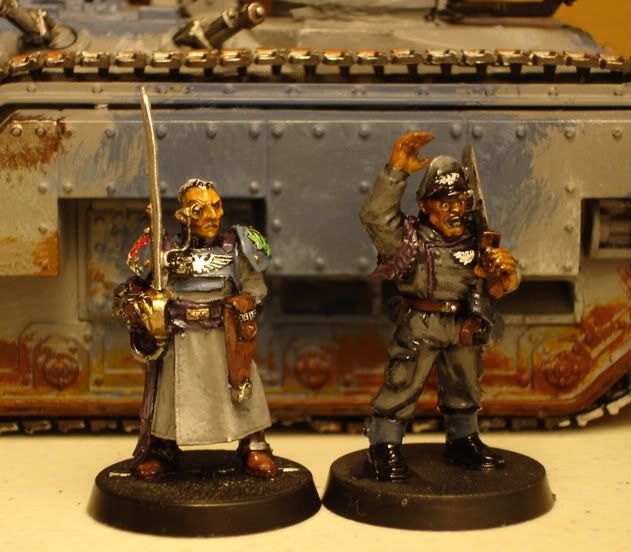 I've purposely excluded range from the offensive matrix. Range is a defensive trait, but both players will naturally vie for the 'long range' power over the game. This is a distinct tactic and doesn't add to the mix.
I've purposely excluded range from the offensive matrix. Range is a defensive trait, but both players will naturally vie for the 'long range' power over the game. This is a distinct tactic and doesn't add to the mix.I would class like this: give a score from 1-5 for each unit, with 1 being inoffensive or poorly densive, this will give you the heat factor on the following equation:
2 x offensive + defensive = heat.
It is as important to gauge your own units, as well as the opponents. This may turn up surprises you were not expecting. Additionally this matrix is useful as it will give you the 'actual' heat of your/their unit rather then the perceived one. This is useful, as 'heat' (and opportunity) is what will be driving the shooting choices and assault choices of your opponent.
Example: Tau pathfinders are dangerous and very versatile units, forming lynch pins in the Tau force. However by looking at the combined scores of the two matrix, a Tau firewarrior squad has medium to high range (3), high strength (4) and medium resilience (3) while being low perceived 'heat'. Many players will ignore firewarrior squads in preference for shooting at crisis suits or hammerheads. This is where the 'fish of fury' tactic has it's greatest strength, giving Tau complete range of the board from a position outside their deployment zone while challenging or capturing an objective. Of course it's important to note that any troop choice on an objective will suddenly gain a lot more heat!
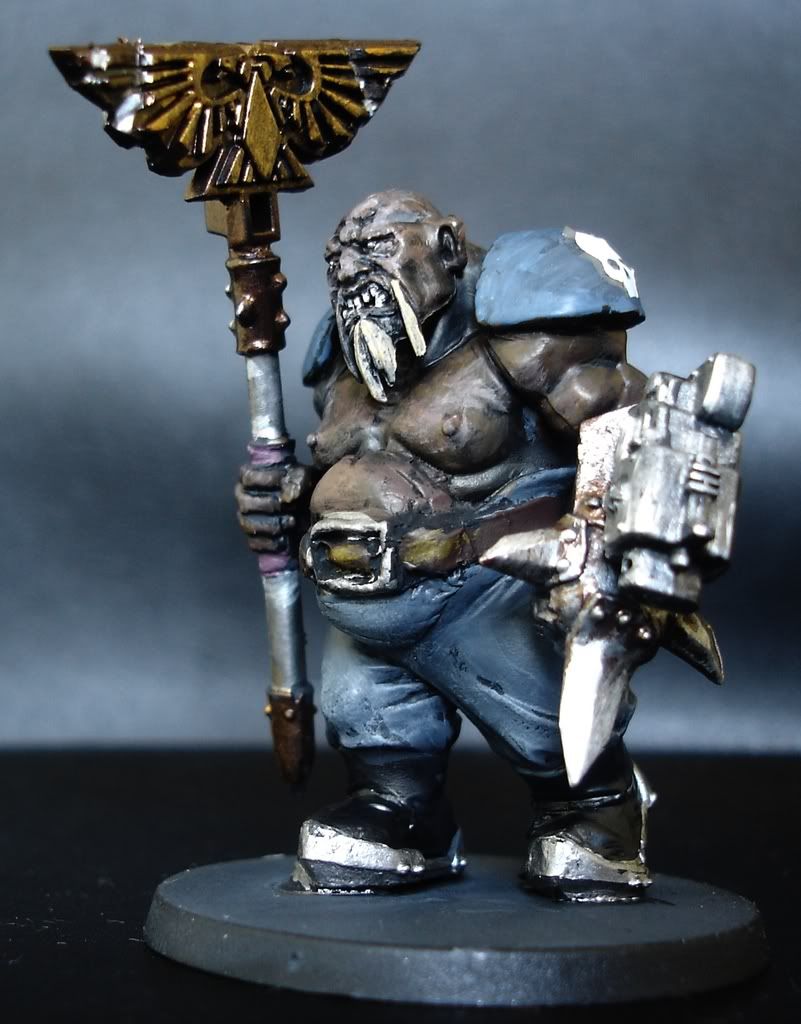 Conclusion (the final mix)
Conclusion (the final mix)I hope the above is of interest. I have started to use the matrix' in anger and have found them to be quite effective, especially in getting an objective view into how your opponent views your force. The final thing to consider is the options of your force against those of your opposition. How do you play to your strengths AND commit his forces in a way you can control and guess at. This process needs to be drawn up from the army list to the table, and in the next part I will be exploring how to break down your force and maximise your potential.
